| Oracle® Retail Financial Integration for Oracle Retail Merchandise Operations Management and Oracle Financials Installation Guide Installation Guide Release 16.0.030 E99915-01 |
|
 Previous |
 Next |
| Oracle® Retail Financial Integration for Oracle Retail Merchandise Operations Management and Oracle Financials Installation Guide Installation Guide Release 16.0.030 E99915-01 |
|
 Previous |
 Next |
As part of hybrid cloud integration between retail applications and Cloud Financials, the retail applications are on premise setup and Cloud Financials is on cloud. The Oracle Retail Financial Integration (RFI) layer serves as an intermediate thin layer of application between the financial applications (CFIN) and Oracle Retail.
This chapter includes:
It is assumed CFIN has already been configured and implemented. It is also assumed the user performing the installation has been provisioned access to the required functions and data in CFIN e.g. "IT Security Manager", "Application Developer", etc.
In order to enable and secure the integrations between RFI and CFIN an RFI user needs to be created at the CFIN end which is in turn used to authenticate and secure RFI as an authorized source of data to being integrated to CFIN.
CFIN provides multiple ways to manage users but this type of users which are meant to be used for integration purposes are created in the CFIN Security Console.
The Security Console is used to manage application security in your Oracle Applications Cloud service. Use the IT Security Manager role to perform security-related tasks pertinent to role management, role analysis, user-account management, and certificate management.
The creation of the RFI user should follow the same process as any other user of the system which starts by the creation of the username, password and other details and then follows through to the provisioning roles to that user which is the most relevant part of the process with regards to the integration with RFI.
The privileges required to enable the integration to CFIN from RFI are under the following roles:
"Financial Integration Specialist" (ORA_FUN_FINANCIAL_INTEGRATION_SPECIALIST_JOB) or;
"Integration Specialist" (ORA_FND_INTEGRATION_SPECIALIST_JOB)
In order to segregate the RFI role from the above generic and standard roles it is recommended that the IT Security Manager creates, beforehand, a new role specifically for RFI by copying its privileges from the Financial Integration Specialist and then name it Financial Integration Specialist for RFI (ORA_FUN_FINANCIAL_INTEGRATION_SPECIALIST_JOB_FOR_RFI).
Once this role is created the IT Security Manager should add the following privileges to the newly created role (if not yet included):
"FSCM Load Interface Administration" (ORA_FUN_FSCM_LOAD_INTERFACE_ADMIN_DUTY)
The new role should then be provisioned to the RFI user.
Oracle CFIN Supplier Model provides a Supplier Outbound Synchronization Service feature that will generate a supplier record snapshot for any external supplier repository to consume. This enables customers to use the Oracle Fusion Supplier Model as a master repository where all supplier profile data is maintained. Near real-time synchronization of Fusion supplier records allows a downstream application to leverage the Fusion supplier data to drive other transaction flows. When any update is made to a supplier record the synchronization service will generate a snapshot of the supplier record in an XML file that models the Fusion supplier structure and transport the document over HTTPS to a single server destination.
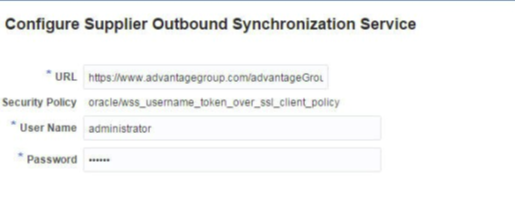
To configure Supplier Outbound Synchronization Service use task Configure Supplier Outbound Synchronization Service in CFIN Setup Manager to define the server location of the Supplier Export Outbound web service.
|
Note: Please note that the URL to be setup in the above screen is the URL of the RFI Supplier Consumer Service and the username and password is the RFI owner. |
If you decide not to use supplier outbound synchronization service for your business, you can remove the data entry for this setup task. Oracle CFIN Supplier Model will no longer generate the XML file for supplier profile data during profile creation or update.
Supplier XML document is transported using the Supplier Export Outbound web service over HTTPS. This is an SSL session that always begins with an exchange of messages called SSL handshake. The handshake allows the server to authenticate itself to the client by using public-key techniques. The server's public certificate should be imported into the trusted key store that is used by the client before the document transport.
Certificates establish keys for the encryption and decryption of data that CFIN applications exchange with other applications
In order to enable the integrations between RFI and CFIN the CFI public certificate needs to be imported into RFI. Use the Certificates page in the Security Console functional area to work with certificates in either of two formats, PGP and X.509. For each format, a certificate consists of a public key and a private key.
Once the certificate is generated and exported from CFIN it must be imported by RFI.
For the inbound to CFIN integrations RFI relies on two standard SOAP Webservices as follows:
The CFIN Account Combination Validation Service which is a SOAP Web Service for the validation of the CoA account code combination:
QName: {http://xmlns.oracle.com/apps/financials/generalLedger/accounts/codeCombinations/accountCombinationService/}AccountValidationInput
Service WSDL URL: https://(FADomain,FSCMServices)/fscmService/AccountCombinationService?WSDL
The CFIN ERP Integration Service which provides external operations for ERP integration scenarios to execute end-to-end inbound and outbound data flows.
QName: {http://xmlns.oracle.com/apps/financials/commonModules/shared/model/erpIntegrationService/}ErpIntegrationService
Service WSDL URL: https://(FADomain,FSCMServices)/fscmService/ErpIntegrationService?WSDL
As part of this installation it should be checked whether these services are enabled and running in CFIN.
For more information on these services and to discover the public external SOAP web services in CFI you can use the SOAP Web Services guides for the appropriate Oracle Applications Cloud service, Developer Connect, or the Service Catalog Service. Information includes public external services for a specific cloud instance and new services that are introduced in patches and customizations.
The purpose of this flow is to load the existing active Suppliers, Supplier Sites, and Supplier Contacts from CFIN into Retail.
These are the steps to load the Supplier details initially from Oracle CFIN to Retail.
Download supplier data from CFIN: the first step is to extract the supplier profile data from CFIN. This can be done as follows.
Login to CFIN. You need to have access to the Oracle ERP Cloud Procurement module to perform this task.
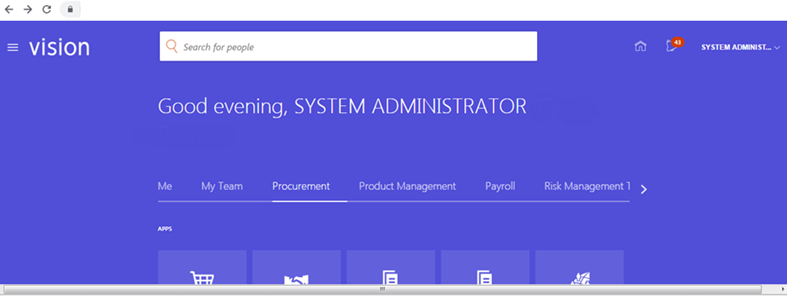
On the left-hand side menu go to Tools and then Reports and Analysis.
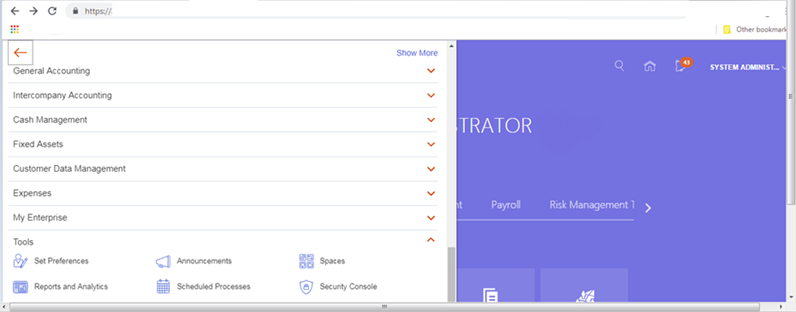
Then Shared Folders:

Then Procurement - Embedded Content:
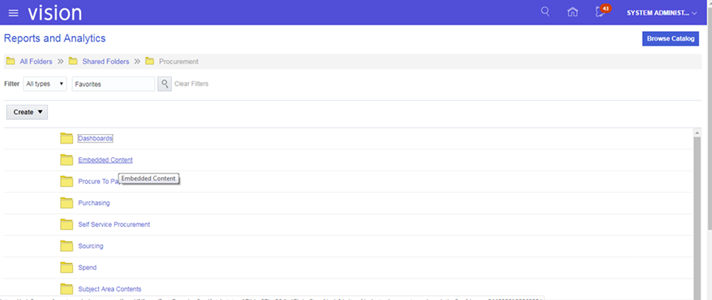
Then Supplier Export Reports:
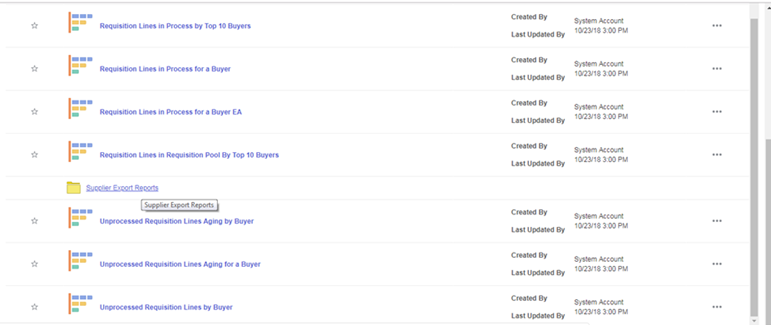
Then you need to extract four data entities as follows:
Supplier data
Supplier Address data
Supplier Site data
Supplier Site Assignments data
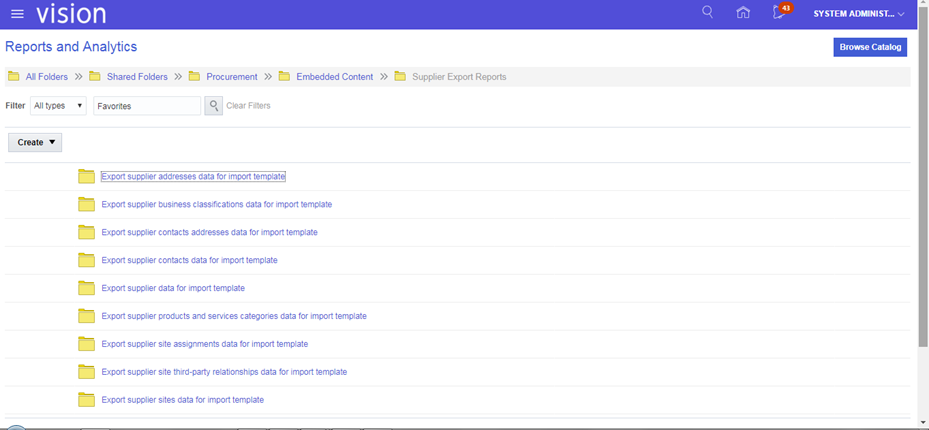
For each data entity, once you click the folder icon the following screen will be displayed.
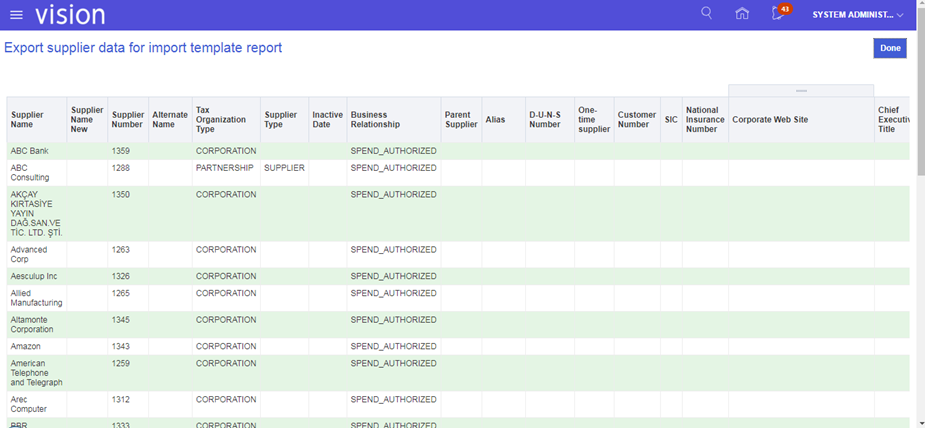
At the right-hand bottom there is an option to export the data to an XML file.
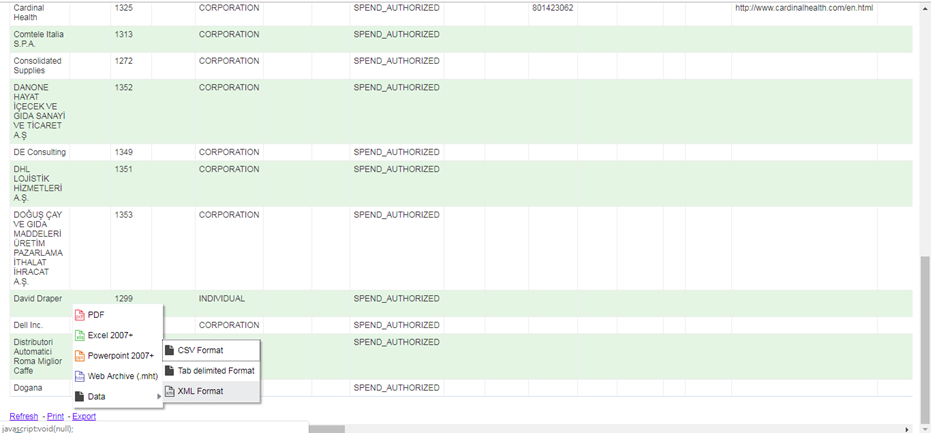
Use that option to export the data in XML format.
Upload supplier data to RFI CFIN
The purpose of this flow is to load the existing active Suppliers, Supplier Sites, and Supplier Contacts from CFIN into Retail.
These are the steps to load the Supplier details initially from Oracle CFIN to Retail.
A wrapper script supplier_initial_load.sh is provided to load the existing Suppliers, Supplier Sites, and Supplier Contacts from a flat file extracted from CFIN to RFI Staging table. These files are available in the RFI pack, folder - - $INSTALL_DIR/cloud-financial /install/setup-data/dml.
An extraction for the supplier data should be generated in CFIN for the supplier data to be loaded. This extraction should follow the same format as the CFIN Supplier Sync Service XML with five flat files that contain the following information.
Supplier
Supplier Site
Supplier Contacts
Supplier Address
Supplier Contacts Address
|
Note: Currently only XML files are supported for this flow. |
Run the supplier_initial_load.sh (available in $INSTALL_DIR/cloud-financial /install/setup-data/dml.
|
Note: $JAVA_HOME and $INSTALL_DIR environment variables need to be set prior running the script.The extracted files from CFIN should not contain any spaces in the file name otherwise the script will not run as wanted. |
The script will prompt for several information, necessary to run the load correctly:
ORFI database host
ORFI database port
ORFI database sid
ORFI database username
ORFI database password
Extracted CFIN supplier flat file location
Extracted CFIN supplier site flat file location
Extracted CFIN supplier Contacts flat file location
Extracted CFIN supplier Address flat file location
Extracted CFIN supplier Contact Address flat file location
Extracted data is loaded into temporary tables.
Suppliers, Supllier Sites, Supplier Contacts records are pushed to RFI Staging tables RFI_SUPP_STAGE, RFI_SUPP_SITES_STAGE, and RFI_SUPP_CONTACTS_STAGE respectly.
Temporary tables are dropped in case of success.
|
Note: The script is only ready to run once. In case of failure check if temporary tables are populated with correct data, drop temporary tables and truncate the staging tables, after that the script is ready to run again. |
Once the initial supplier details are moved to RFI Staging tables, the records are sent to Retail similar to the Supplier Incremental Loading process.